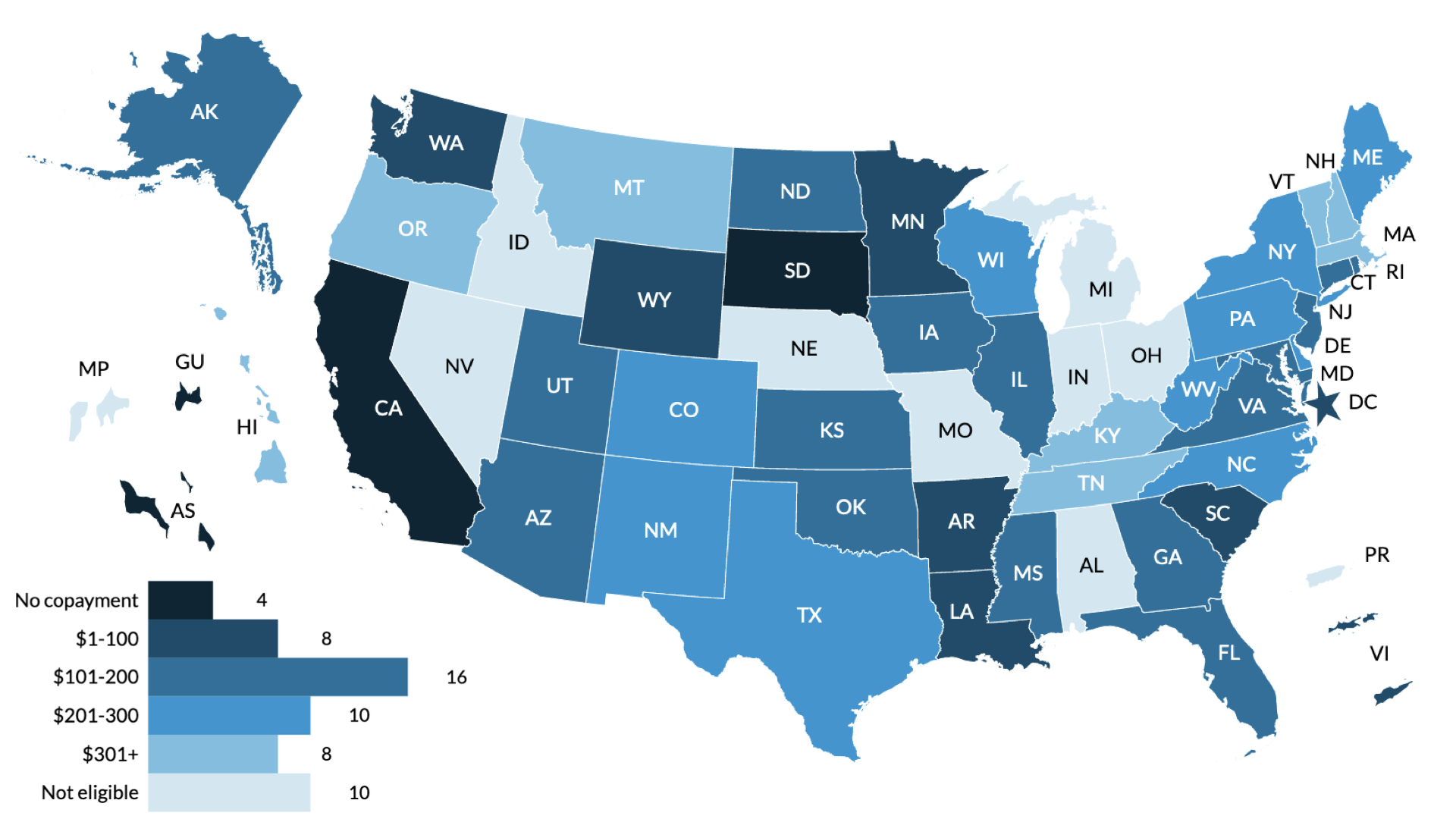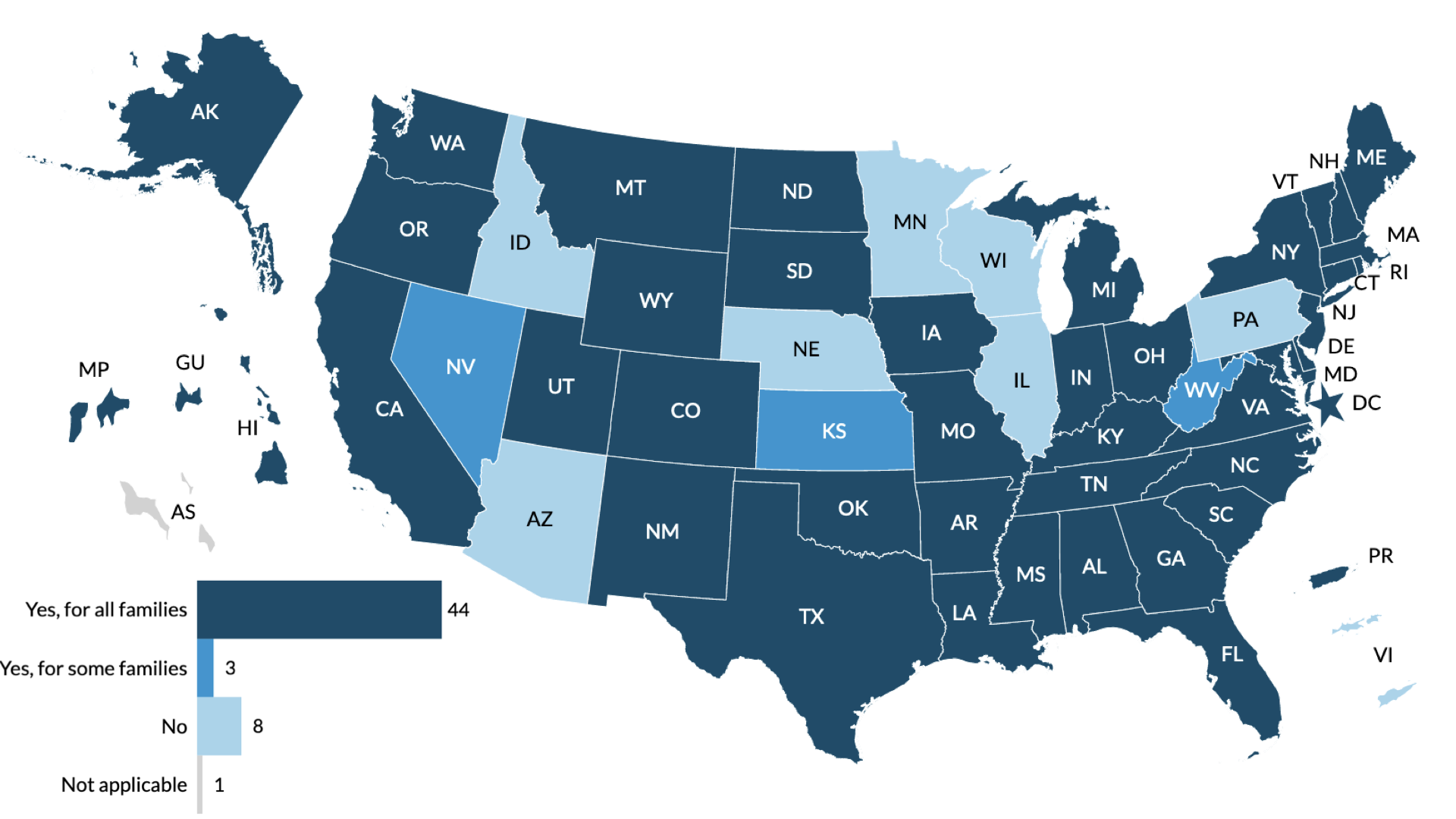
As COVID-19 spread throughout the United States, families faced increasing economic hardship. Many workers lost their jobs or saw their hours reduced, with those at the lowest wage levels hit the hardest. Families with low incomes with children in child care faced the added challenge of paying for that care during this straining time.
The Child Care and Development Fund (CCDF) offers one source of support to help families pay for child care. In 2020, about 1.5 million children in 900,000 families received subsidized child care through CCDF. Each state and territory establishes its own CCDF policies (PDF) within a set of federal guidelines. During the pandemic, the federal government provided additional flexibilities and guidance for how states and territories could further adapt their programs to meet families’ changing needs, like the need for assistance for parents who lost employment and essential workers’ needs.
In response to the pandemic, many states and territories changed how much families receiving child care subsidies were required to pay for care, referred to as copayments or family fees. While federal guidelines suggest family copayments should not exceed 7 percent of income, states and territories can set the copayment amount based on family size, income, the number of children in care, or other factors. Our most recent reports (PDF) show most states and territories reduced copayments to $0 for some period during the pandemic, which helped alleviate financial burdens on families using subsidized child care—a strategy that could also help in future crises.
How states adapted their child care subsidy copayment policies during the pandemic
Before the pandemic, many states and territories already exempted certain groups of families from copayments (PDF), like families with incomes below the federal poverty level and children in protective services. However, standard federal CCDF policy does not permit waiving copayments for all families.
Families of Three Earning $30,000 Annually Were Not Required to Pay Monthly Copayments as of January 30, 2020, in Four States and Territories

Source: Child Care and Development Fund (CCDF) Policies Database.
Notes: For this figure, we define a three-person family as consisting of one adult and two children, ages 2 and 4. The children are assumed not to have special needs and to be in center-based care for eight hours per day, five days per week. The number and age of children receiving care can affect the family’s total copayment based on their state or territory’s copayment calculation and adjustment methods. See table 31 in the Book of Tables (PDF) for more information on copayment policies for families with more than one child in care.
As of January 30, 2020, just before COVID-19 was declared a public health emergency, a three-person family earning $30,000 per year, or about 138 percent of the federal poverty guidelines, was eligible for CCDF in 46 states and territories, and ineligible for CCDF in 10 states and territories. Of these 46 states and territories, only four (American Samoa, California, Guam, and South Dakota) had copayment policies in place that did not require families of this size and income level to pay a monthly copayment. Of those four, only American Samoa waived copayments for all eligible families, with California, Guam, and South Dakota requiring families of three with annual earnings greater than $30,000 to pay a non-$0 copayment. In the other 42 states and territories, copayments for a three-person family earning $30,000 annually ranged from $44 per month in Louisiana to $1,561 per month in Hawaii.
47 States and Territories Waived Copayments for Some or All Families at Some Point between January 31, 2020, and March 1, 2022

Source: Child Care and Development Fund (CCDF) Policies Database.
Notes: American Samoa has always waived copayments for all eligible families. Several states changed their policies during this time period. Where a state or territory had multiple policies in place during the time period, we show the policy that waived copayments for the most families. See the 2020 (PDF) and 2021 (PDF) COVID-19 Appendices to the Book of Tables for more detailed policy descriptions for each state and territory.
In contrast, between January 31, 2020, (when the COVID-19 pandemic was declared a public health emergency) and March 1, 2022, 47 states and territories waived copayments, meaning they did not require a copayment for some or all families for at least some period of time. Of these, 44 states and territories waived copayments for all families, under approved CCDF waivers for extraordinary circumstances because of COVID-19. Additionally, Kansas and West Virginia waived copayments for families with essential workers, and Nevada waived copayments for families that experienced a job loss.
As of March 1, 2022, (the most recent data on COVID-19 policies we’ve collected), 26 states and territories were still waiving copayments for some or all families, but the other 21 states and territories had fully rescinded the copayment waivers enacted during the pandemic for all families.
Tracking CCDF policies can help policymakers support families’ needs during crises
The CCDF Policies Database tracks state and territory CCDF policies over time. In addition to changes to family copayment policies, it captures other program changes that states and territories made to support families facing increased economic hardship during the COVID-19 pandemic, including expanding job search eligibility, modifying eligibility requirements, or prioritizing eligibility for families with essential workers. The database also captures policies that supported child care providers through different provider payment policies for absences and closures, as well as pandemic-related increases to provider payment rates.
During the COVID-19 pandemic, various aspects of CCDF programs may have temporarily changed, including the number of children and families receiving subsidies and the number and characteristics of child care providers participating in the program. Information from the CCDF Policies Database can be linked with program administrative data to understand more about the implications of various policy changes.
As states and territories continue to adapt their policies to meet the evolving needs of families, the CCDF Policies Database can help researchers and policymakers compare policy outcomes and determine how best to meet the needs of families with low incomes—who are often hit the hardest by national crises.
Let’s build a future where everyone, everywhere has the opportunity and power to thrive
Urban is more determined than ever to partner with changemakers to unlock opportunities that give people across the country a fair shot at reaching their fullest potential. Invest in Urban to power this type of work.